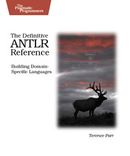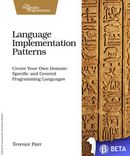Welcome
Welcome to Confluence
Confluence is where your team collaborates and shares knowledge — create, share and discuss your files, ideas, minutes, specs, mockups, diagrams, and projects.
This ANTLR 3 wiki complements and supports the ANTLR 3 website. Inside the wiki you will find documentation, tutorials and a FAQ.
We hope that you find what you need to learn more about ANTLR 3 on this wiki. If this is not the case, you may register and help (please read our entire welcome message first).
To get started with ANTLR, jump to FAQ - Getting Started. If you run into trouble, ANTLR has a mailing list full of helpful ANTLR fans. You should also consider reading the following books:
This tab shows all recently updated content. Create some content to see it appear here.
[See tree-patterns branch in parrt/antlr4]
ANTLR 4 introduced a visitor and listener mechanism that lets you implement DOM visiting or SAX-analogous event processing of tree nodes. This works great. For example, if all you care about our looking at Java method declarations, grab the Java.g4 file and then override methodDeclaration in JavaBaseListener. From there, a ParseTreeWalker can trigger calls to your overridden method for you as it walks the tree. Easy things are easy.…
In null vs missing vs empty vs nonexistent in ST v4 a few years ago, I tried to resolve in my head the difference between a missing attribute, a null value, an array with no elements, and a string with no characters. I don't think I got it completely thought through and ST v4 might have some weird inconsistencies. This page is an attempt to finally write down all the cases and resolve exactly how things should work.…
Because most ANTLR users don't build compilers, I decided to focus on the other applications for ANTLR v4: parsing and extracting information and then translations. For compilers, we need to convert everything into operations and operands--that means ASTs are easier. For example, 3+4 should become a tree with + at the root and 3 and 4 as operands/children: (+ 3 4). The parse tree in contrast is probably (expr 3 + 4) where rule reference expr is the root node and the other elements are children.…


